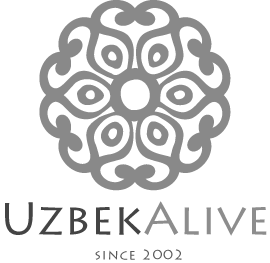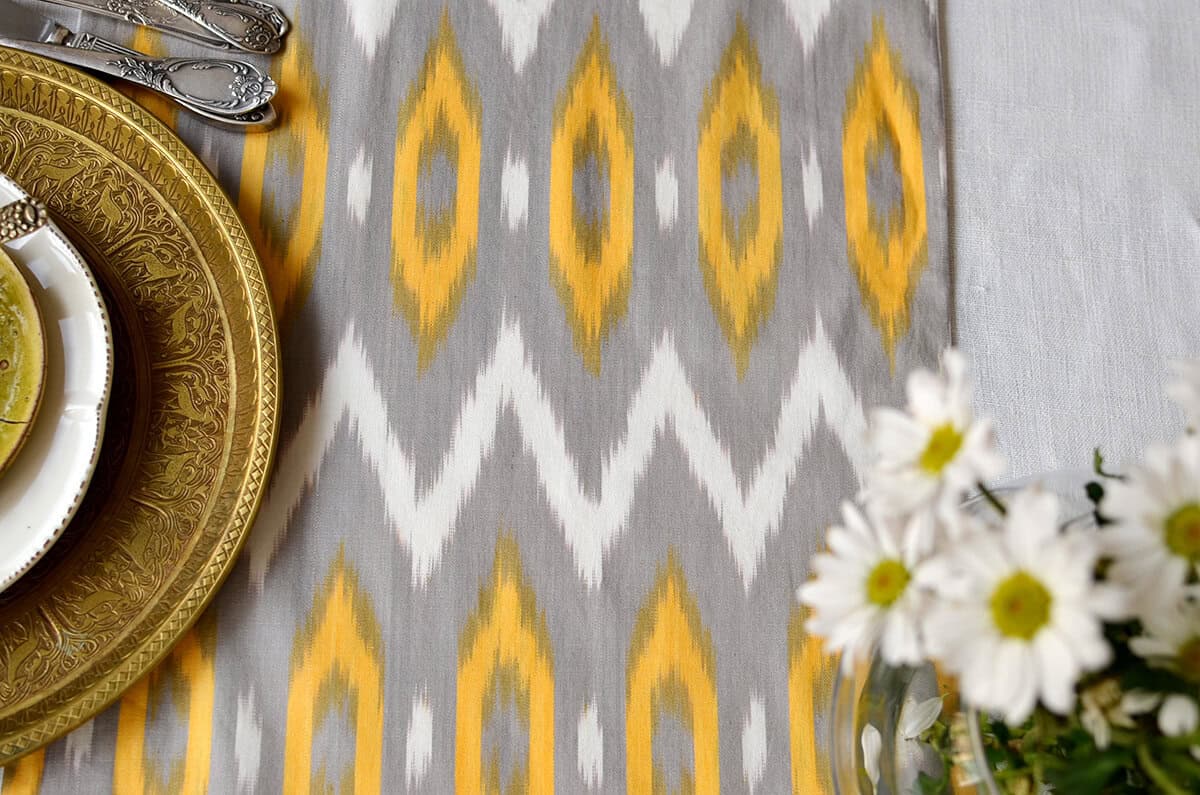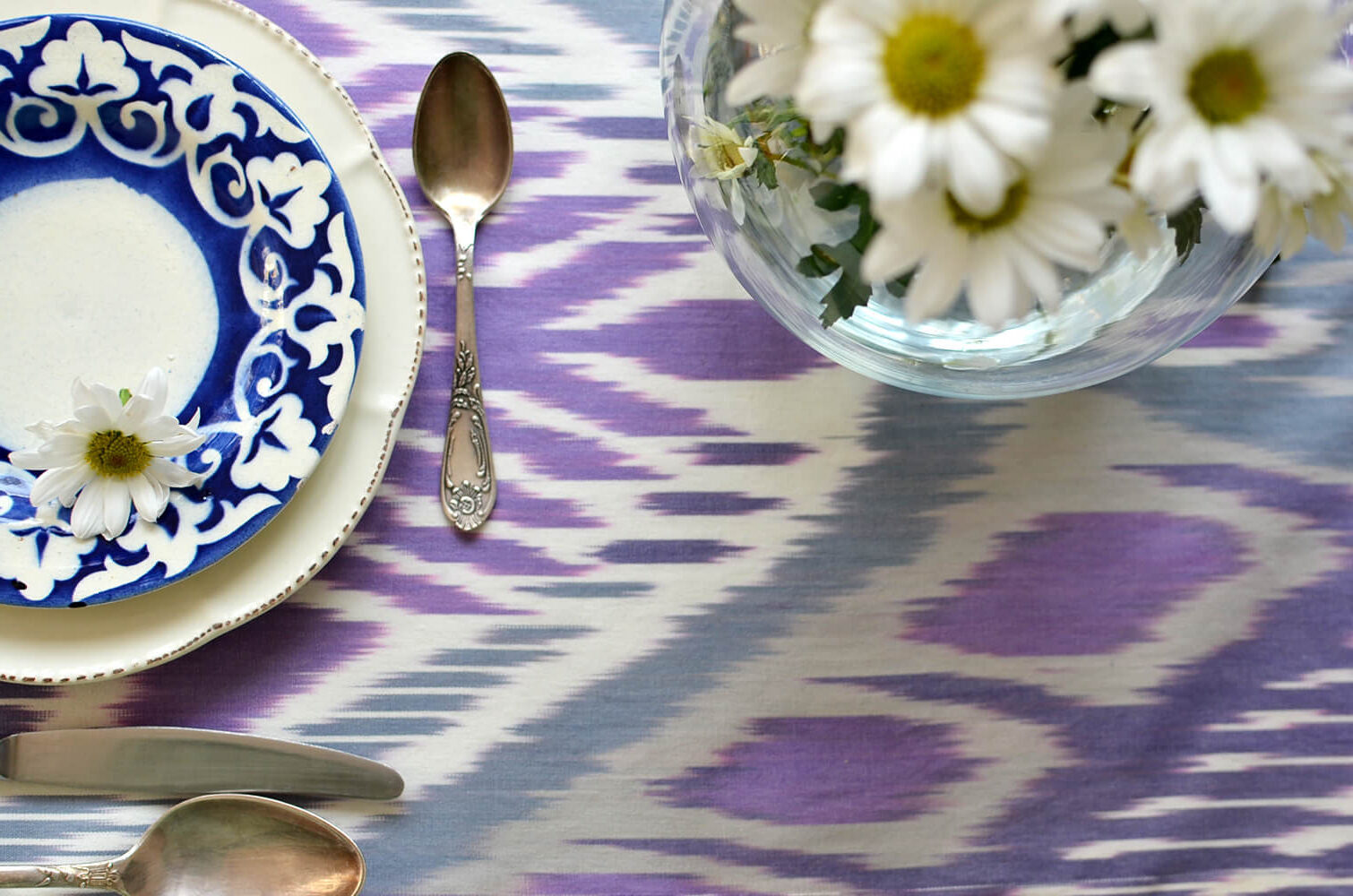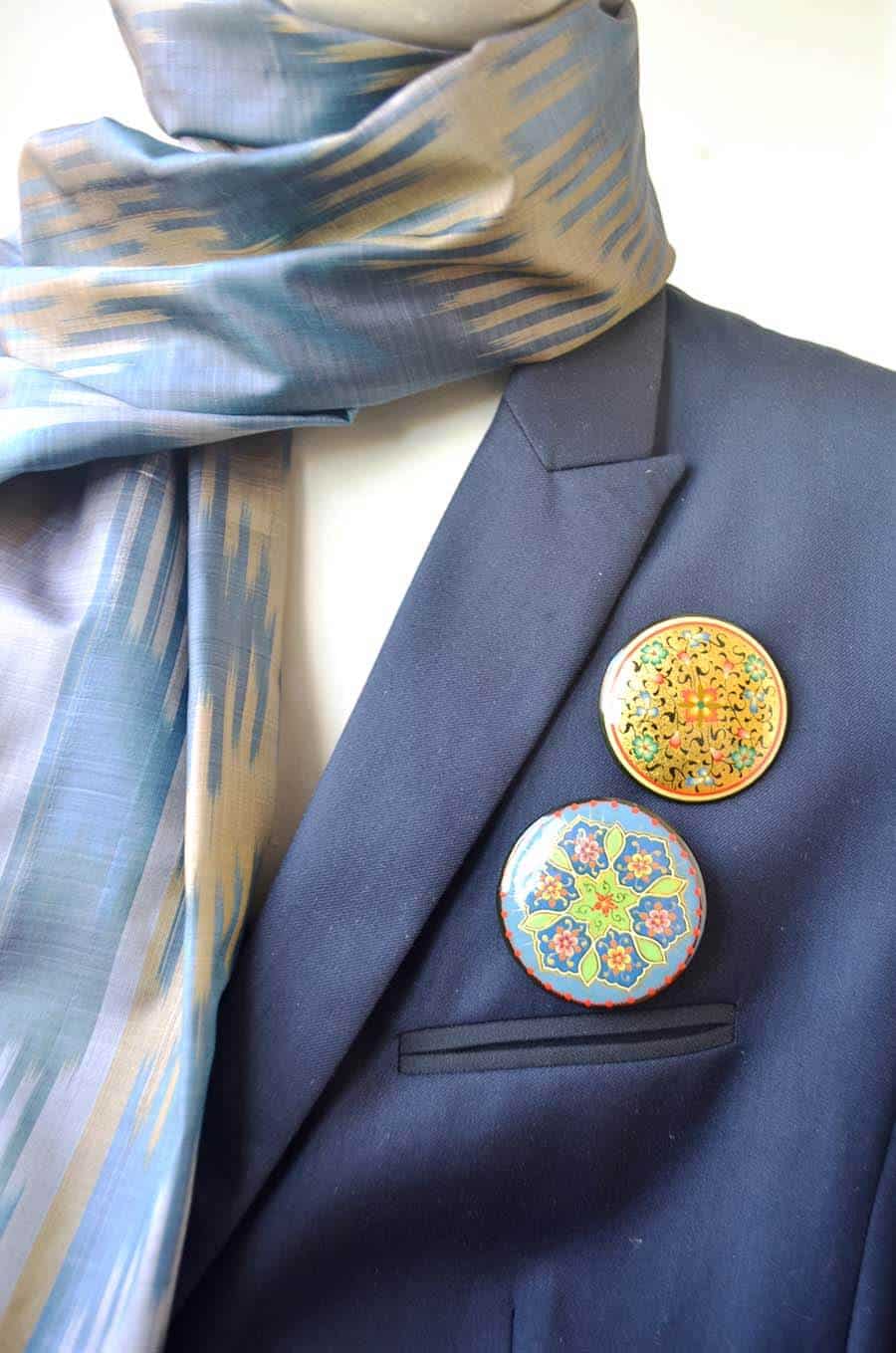1960s’ Uzbekistan, clay walls, floor mats, ikat dress and a skullhat
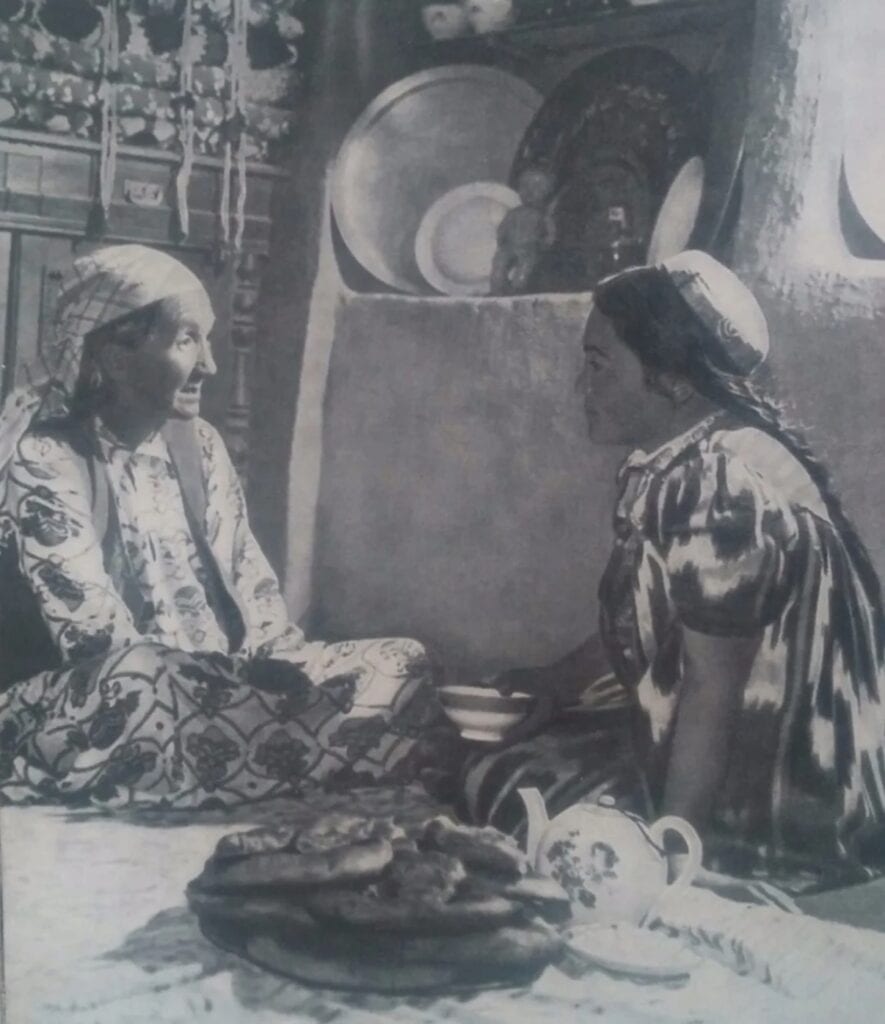
1964 photo album of Central Asia and Kazakhstan
“Visiting an Old Kolkhoz Farmer”—this is the title of a photograph from the 1964 album Central Asia and Kazakhstan.
Several interesting details stand out in this image:
- The simple clay walls contrast with a shelf of china, possibly Russian porcelain.
- Large trays symbolize hospitality and gatherings, traditionally used to serve food for many guests.
- On the left, there’s a chest of drawers, likely Russian-made. Similar pieces can still be found in Uzbekistan today.
- On top of the chest is a stack of folded floor mats, known as korpacha. These versatile mats serve as seating during the day and bedding at night. The two women in the photo are also sitting on korpacha. A large stack suggests a big family.
Traditionally, Uzbeks sit on the floor. European-style tables started arriving in Central Asia in the late 19th century. Larger cities and European-minded families adopted table seating quickly, but even today, floor seating remains the norm, especially in villages. It’s a wonderful tradition that helps keep hip and knee joints flexible well into old age.
- Finally, the young woman on the right wears an ikat dress made of what appears to be a pure silk, machine-woven ikat fabric. These dresses had a standard cut but came in different sizes. Notice her skull hat and beautifully maintained hair, likely washed with yogurt, which was a primary hair cleanser in the pre-shampoo era.
Speaking of skullhats …
Just in case you are looking for skull hats for women, we have a few available for sale at this link. These skull hats are hand-embroidered in Uzbekistan and require dry cleaning.
Uzbek skull hats are known as Doppi in Uzbek or Tubeteika in Russian. Their origins trace back to the Silk Road, where traders, travelers, and locals wore them. Over time, they became a symbol of Uzbek identity and pride.
A bit of mysticism…
One intriguing aspect of the Uzbek skull hat is the belief that it protects the wearer from the evil eye. This ancient belief adds another layer of significance, making it more than just an accessory. It serves as a talisman, shielding its wearer from negative energy and envious gazes.
Adding to the mystique of the Uzbek skull hat is the tradition that it should not be passed from one person to another. According to belief, passing the hat to a new wearer transfers not only the fabric but also the energy and worries of the previous owner. This emphasizes the deeply rooted connection between the hat and the individual’s unique experiences.
